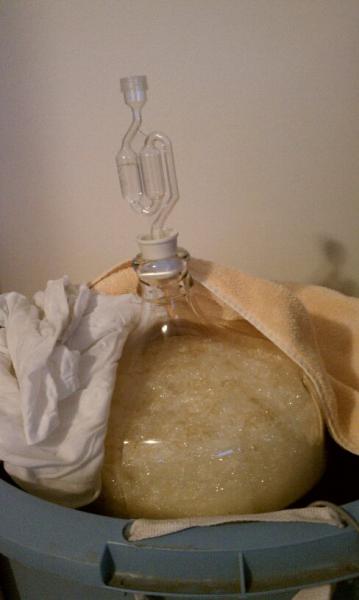Hojo3322
Well-Known Member
- Joined
- Jul 9, 2011
- Messages
- 46
- Reaction score
- 0
After reading countless threads, articles, books i am finally ready to brew my first batch this Saturday. I am trying to put together a checklist of things to make the process go as smoothly as possible. My first brew is going to be an extract kit from Northern Brewer called "Dead Ringer IPA" I bought the deluxe beer started kit from them as well
http://www.northernbrewer.com/brewing/marketing-categories/landing/deluxe-beer-starter-kit.html
I had a few questions that I was hoping the community could help me out with.
1. I have 2 glass carboys that came with my brew kit, 1 5 gallon and 1 6 gallon carboy, The recipe calls for dry hopping during the secondary fermentation step I know this is probably a dumb question but which carboy should be my primary and which should be my secondary?
2. My recipe kit came with a smack pack yeast WYEAST 1056 AMERICAN ALE. Should I smack the yeast 48 hours before brewing or is that too far in advance?
3. looking for any and all cleaning and sanitizing tips, I was planing on using oxi-clean for cleaning and BFT Iodophor for sanitizing
Cant wait to get to start my first brew!!
http://www.northernbrewer.com/brewing/marketing-categories/landing/deluxe-beer-starter-kit.html
I had a few questions that I was hoping the community could help me out with.
1. I have 2 glass carboys that came with my brew kit, 1 5 gallon and 1 6 gallon carboy, The recipe calls for dry hopping during the secondary fermentation step I know this is probably a dumb question but which carboy should be my primary and which should be my secondary?
2. My recipe kit came with a smack pack yeast WYEAST 1056 AMERICAN ALE. Should I smack the yeast 48 hours before brewing or is that too far in advance?
3. looking for any and all cleaning and sanitizing tips, I was planing on using oxi-clean for cleaning and BFT Iodophor for sanitizing
Cant wait to get to start my first brew!!






















![Craft A Brew - Safale S-04 Dry Yeast - Fermentis - English Ale Dry Yeast - For English and American Ales and Hard Apple Ciders - Ingredients for Home Brewing - Beer Making Supplies - [1 Pack]](https://m.media-amazon.com/images/I/41fVGNh6JfL._SL500_.jpg)

























